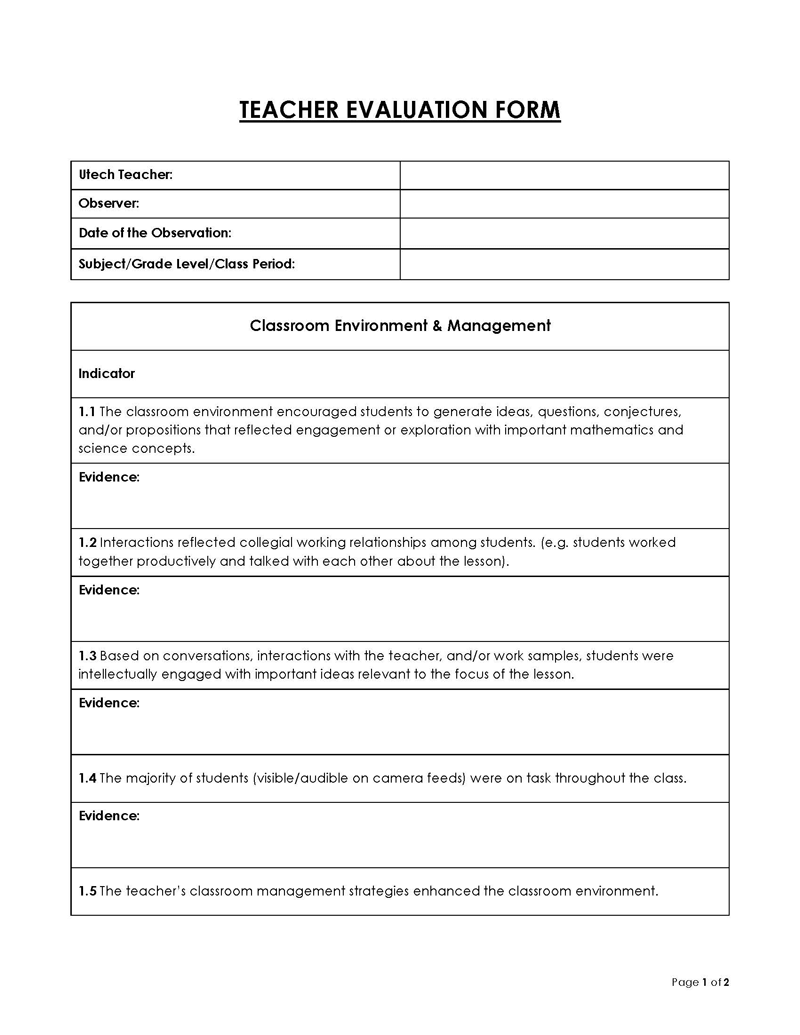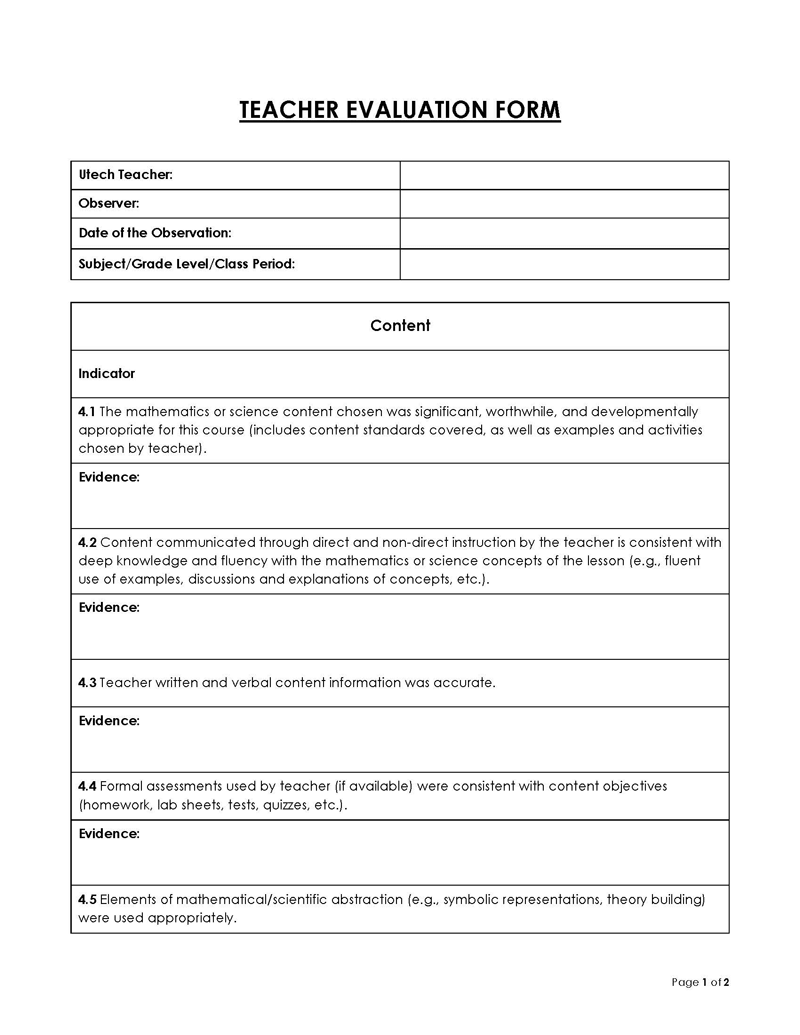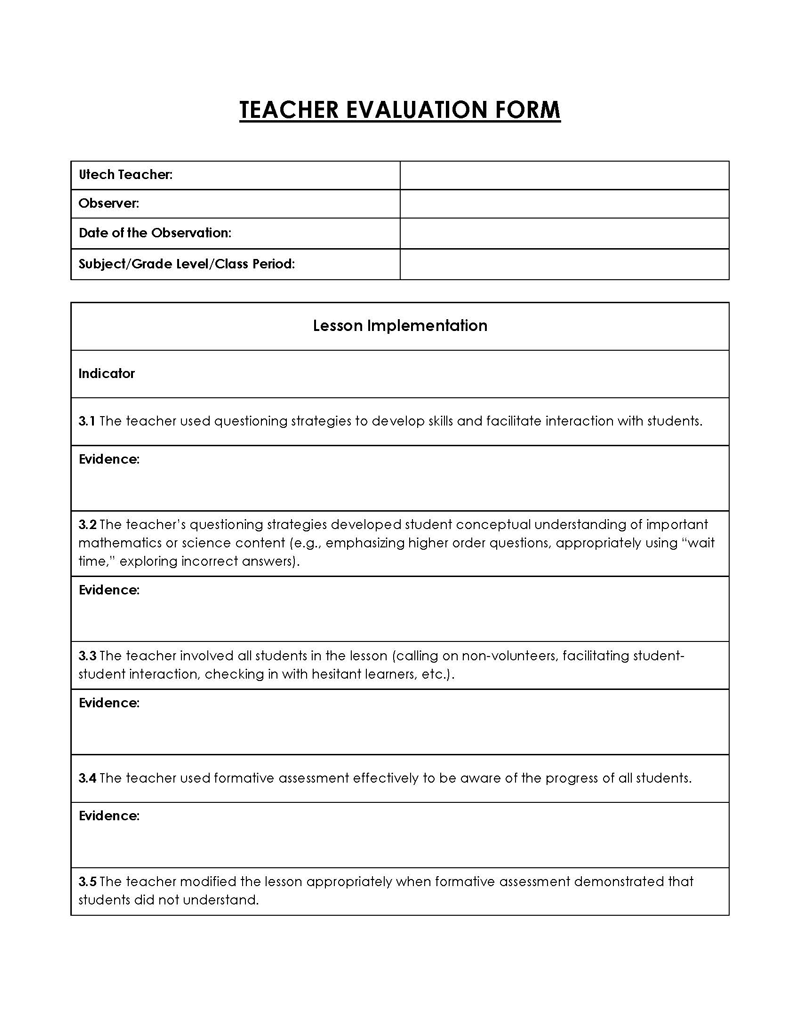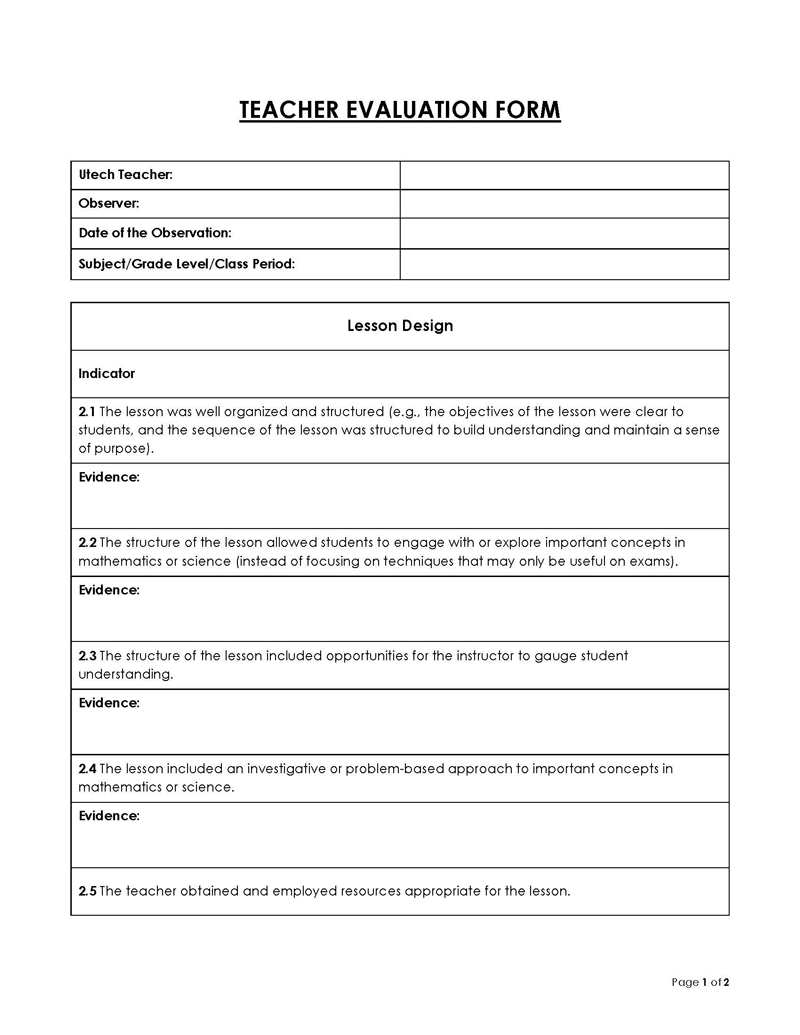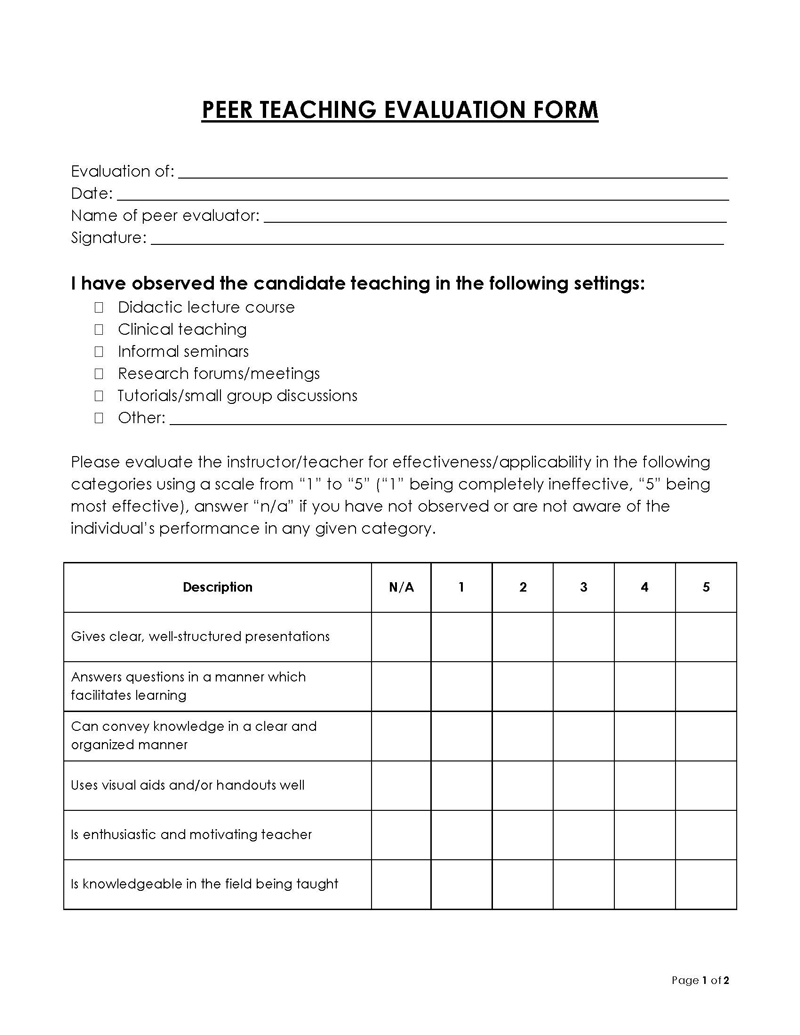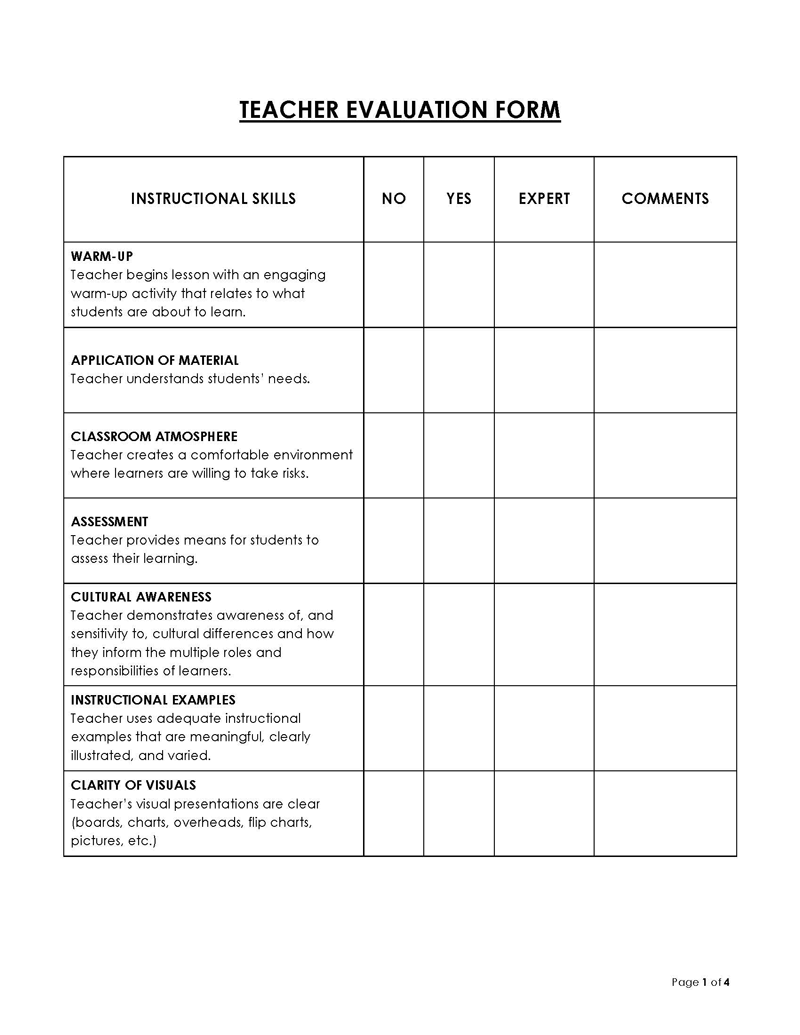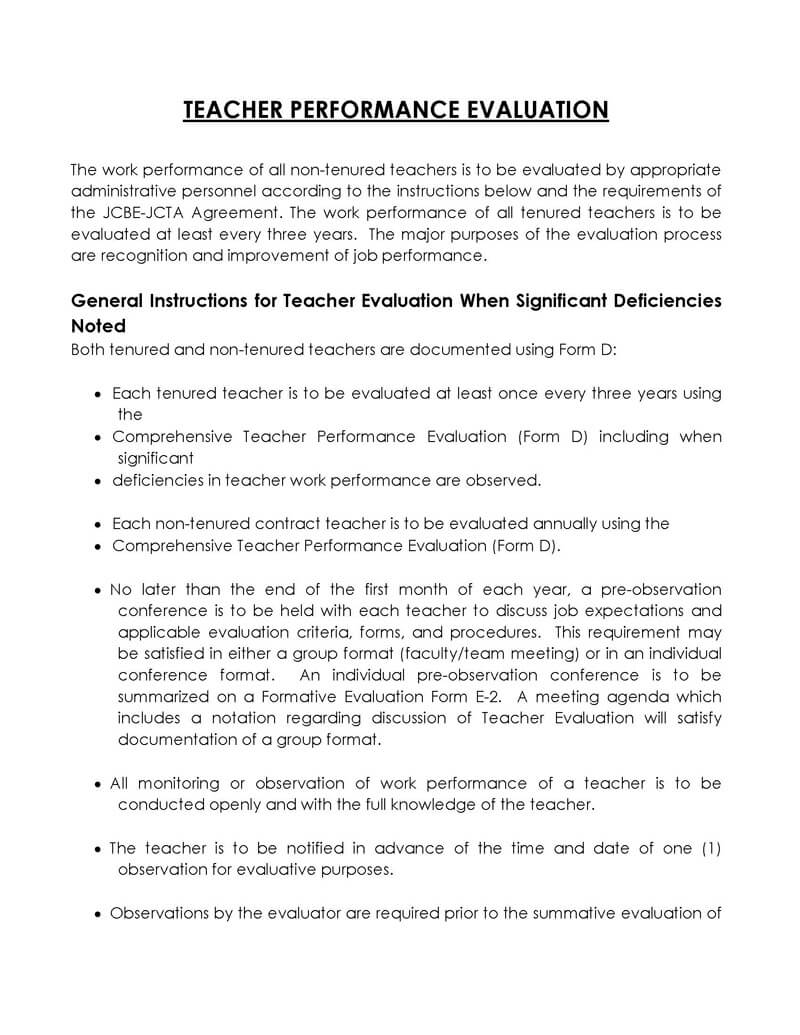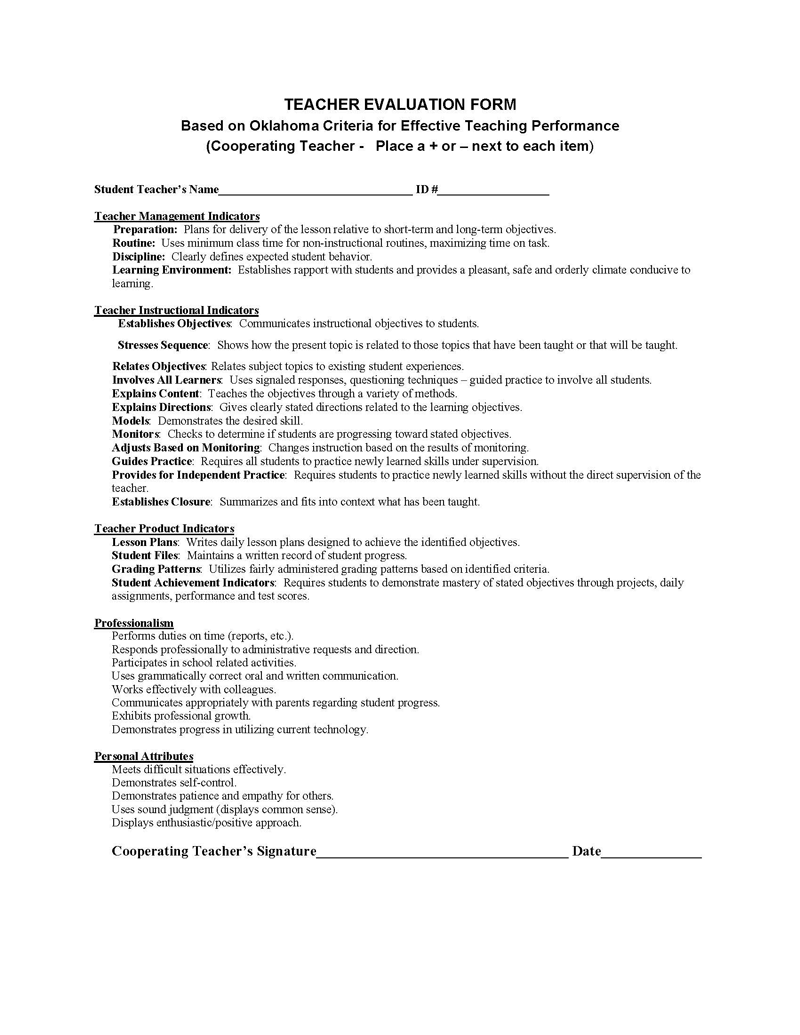Teacher evaluation is a process of assessing teacher performance in a classroom. Stakeholders, school principals, administrative staff members, students, and parents may participate in teacher evaluation, depending on state laws and procedures developed by individual schools. The evaluators review teachers based on predefined criteria and offer constructive criticism.
Teacher evaluation forms and the chosen appraisal criteria may vary between states and schools. However, several aspects of teacher performance are considered universal – teacher records, curriculum, lesson planning, teaching methods, and student output.
Based on the extensive assessment, the evaluation team recommends improvement measures. By helping teachers grow and improve, professional evaluation assists in creating a richer learning experience for students.
Did You Know? Teacher evaluation dates back to the early days of the public school system. At first, the process was heavily focused on employee effectiveness. Later, teacher evaluation changed its focus when the student-centric approach became an education staple. Today, the end goal of teacher reviews is to enhance the quality of education for all students. But unfortunately, one of the criticisms that modern-day evaluation practices face is that they overlook students’ individuality.
Free Templates: Teacher Evaluation Form
Whether you do not have enough time to create teacher evaluation forms from scratch or are unsure where to begin, you can rely on us to provide the correct evaluation form template for your needs. On this website, you can find downloadable teacher evaluation form templates that are free and easy to customize. They can assist your teacher appraisal in multiple ways –saving your time and resources and allowing you to conduct a more thorough evaluation.
Why is Teacher Evaluation Important?
Continual teacher improvement fosters a rich learning environment where educators and students can thrive. Teacher evaluation plays a crucial part in improving both educators and students. Revealing each teacher’s strengths and weaknesses drives positive change in all aspects of education.
These are only a few main benefits of teacher evaluation:
- Enhancing individual teacher quality and overall teacher quality standards.
- Promoting active self-reflection and continual improvement in teachers.
- Helping teachers develop more effective methods for imparting knowledge.
- Honing one-on-one teaching by spotting and overcoming current limitations.
- Facilitating student-teacher communication and professional collaboration.
- Pinpointing new gaps in teaching methods that may hamper student progress.
- Pinpointing curriculum loopholes that may be responsible for poor outcomes.
- Holding teachers accountable for their effectiveness based on measurable merit.
- Ranking teachers based on their professional qualities and achievements.
- Making data-based decisions about promotions, demotions, and terminations.
- Getting a better understanding of the teaching role for writing job descriptions.
- Lowering the high attrition rate by making better employment decisions.
- Enabling schools and stakeholders to recognize and honor exemplary teachers.
- Providing invaluable insight and aiding informed decision-making in schools.
- Learning more about current productivity challenges that teachers are facing.
- Creating a healthy environment for teachers’ professional development.
- Improving overall performance, employee satisfaction, and teacher retention.
How to Conduct Teacher Evaluation?
Teacher evaluation is a complex process that requires a comprehensive skill set and a systematic approach to goal setting, choosing measures for appraisal, and providing feedback.
To help you get started, here is a step-by-step guide with all the best evaluation practices:
Step 1: Specify teacher evaluation goals
In a considerable percentage of schools, the ultimate goal of teacher evaluation is accountability. School principals and administrative staff use teacher appraisals to generate essential insight and inform their compensation, promotion, and termination decisions. However, the Center on Great Teachers and Leaders (GTL Center) does not recommend this approach, as it diminishes the immense potential of teacher evaluations for teachers’ professional growth and student success.
Before achieving the maximum potential of teacher evaluations, first, you must define what you want to achieve by evaluating your teachers. The following questions can help you set clear, achievable, and measurable goals for your appraisal system and teacher evaluation forms:
- What areas of performance would stakeholders want to see improved? (Possible answers: better student performance, improved teacher retention rates.)
- Are your teacher evaluation goals specific, relevant, and time-bound?
- Can you communicate your goals with stakeholders without confusion?
- Will teacher evaluation analysis help you improve other aspects of your institution? (Possible answers: one-on-one teaching, curriculum, financial projections.)
Step 2: Establish standards
Every educational institution defines what is effective in terms of teaching performance differently. Teaching standards directly depend on this definition. If you are unsure how to define teaching effectiveness for your educators, a definition by the GTL Center might help you.
According to the Center on Great Teachers and Leaders, effective teachers:
- Encourage excellence in all students and provide learning assistance, as measured by a carefully chosen gauging model.
- Help students set and achieve commendable goals in terms of academic success, attitude towards learning, and social development, such as good work ethic, self-improvement, independence, and teamwork.
- Create motivating learning experiences from a vast pool of resources; track individual student performance in a formatting way and provide constructive feedback, advice, and help; provide student assessments based on multiple evaluation practices.
- Work with their colleagues, school staff members, parents, and other educators to achieve student excellence, especially for students with special needs.
Many schools struggle to define standards for measuring teacher performance. According to the Council of Chief State School Officers (CCSSO) and it’s Interstate Teacher Assessment and Support Consortium (InTASC), ten essential teaching standards determine performance:
- Development of students
- Differences in learning
- Environment for learning
- Knowledge material
- Application of said material
- Evaluation
- Developing instruction plans
- Strategies for instructions
- Learning in the Context of Ethics
- Leading and Collaborating
Step 3: Select measures
The third step for preparing and conducting a successful teacher evaluation process is – choosing the suitable assessment measures. Once more, the Center of Great Teachers and Leaders provides a list of recommended measures that any institution can adopt as they are or customize if needed.
The teacher evaluation measures endorsed by the GTL Center are:
Classroom observation
According to the GTL Center, observation in the classroom is the best measure for assessing processes that take place in a classroom context. This includes observation points such as individual teaching practices, holistic approaches to education, teacher-student communication, and collaboration in class.
Principal evaluation
This teacher evaluation measure also observes what happens in the classroom, but with entirely different goals. The main reason for principal evaluation is to summarize each teacher’s performance. In most cases, it is intended to aid decision-making concerning new teachers’ dismissal and tenure.
Instruction artifact
Student assignments, results, tests, lesson plans, and other classroom artifacts also play an essential part in teacher evaluation. The measure that outlines analysis protocols for classroom artifacts is called instruction artifact and is frequently used in all educational institutions.
Student survey
As its name suggests, this teacher assessment measure involves students and their opinion about their teachers’ effectiveness and overall performance.
Value-added model
The value-added model is a measure that helps evaluation teams quantify the positive impact of each teacher on student test score gains.
Teacher evaluation models
There are three teacher evaluation models that today’s schools and other educational institutions regularly use, depending on various factors:
- CEL 5D+ Teacher Evaluation Rubric 2.0 was designed for instructional leadership. It establishes 31 best practice indicators and a five-day onboarding period for principals and administrative staff. If you want to learn more about it or join the first 100 US districts already using this model, you can download the framework from CEL’s website.
- The Framework for Teaching by Charlotte Danielson includes 22 elements and four domains i.e. Planning and Preparation, Instructions to the Class, Maintaining the Classroom Environment and Fulfillment of Professional Duties. This framework is used across the US and is available for download and customization at Danielson’s official website.
- Marzano Art and Science of Teaching Framework. This framework has a whopping 41 out of 60 components that involve classroom behaviors and strategies. In addition, more than 24 other components are designed to help principals (and other roles involved in the management of educational institutions) develop the necessary management skills and empower their teachers’ professional growth.
Another thing that makes this model unique is that it is highly customizable. Rather than a finished product, Marzano’s framework is a personalized training program recommended for principals, their assistants, and their evaluators. It is provided in person, through virtual training sessions, and as courses for self-studying. Nevertheless, it is primarily technology-free.
Tip: Choosing the right measure for teacher evaluation is crucial for constructive assessment, but it is not easy. To make the best choice, consider factors such as the general purpose of your evaluation system, the strengths, and weaknesses of these measures, their suitability for different teaching environments and student populations, and required personnel and resources.
Step 4: Determining the structure of the evaluation system
Three factors determine the structure of every teacher evaluation system:
- Level of teacher performance (which may range from developing to exemplary).
- The frequency of assessments (how often the evaluation team assesses teachers).
- The relation between overall teacher rating and the percentage used in each measure.
Step 5: Fill out the teacher evaluation form
Previous steps should help you define what you want to achieve, what elements the appraisal should involve, and how you want to measure them. Once you know all this, filling out a teacher evaluation form should be easy enough.
Step 6: Share evaluation results with the teacher
The sixth and final step of teacher assessment offers an essential opportunity for professional growth and development. This is where evaluators share and discuss their findings with teachers.
Assuming the role of a mentor, evaluators must approach this discussion from the standpoint of constructive feedback. After commending teachers’ strengths, evaluators should explain which areas of teacher performance need improvement and why. Then, depending on teachers’ experience, evaluators could provide guidance, advice, and development plans that teachers can use to improve their outcomes. For instance, you can share your best practices or recommend student surveys.
For educational institutions interested in holistically using teacher evaluation, this feedback makes all the difference between fulfilling a convention and creating a transformative experience for teachers and students. In addition, it is a unique chance for evaluators to overcome their traditional role and prove that they are vital for the continual improvement of the entire system.
Effective Practices for Conducting a Teacher Evaluation
Having a suitable teacher evaluation form is, unfortunately, not enough. Teacher appraisal is a procedure with many complex steps. Knowing what works and what does not from the beginning can save you a lot of struggles.
You can follow the following practices for conducting a teacher evaluation:
Be the right evaluator
The framework for teaching developed by Charlotte Danielson defines four critical domains for teacher evaluation. The third one, named “Instruction,” emphasizes the importance of student engagement in the collective learning process during class. According to this measure, effective teachers should develop various activities to engage their students’ intellect.
Following this, effective evaluators should assess teachers with this measure in mind. In addition, they must base their evaluations on various learning evidence and remain objective and consistent when making appraisals.
Engage teacher leaders
Some of the most influential teacher evaluation practices involve teacher leaders and exemplary educators with perpetually high evaluation scores. As an evaluator, you are tasked with engaging these teachers and explaining the importance of teacher assessment to them. Then, during evaluation or after reviewing the results, the best teachers can help develop an improvement plan and provide guidance to their less experienced colleagues.
Go beyond just observing
The best evaluators do not stop observing. Instead, they employ formal and informal assessment techniques to get a holistic view of the teacher. While doing so, they assess the teacher’s behavior and how students respond to various didactic methods.
Both student test scores and the learning atmosphere in the classroom can measure teacher effectiveness. In addition, the level of student participation and engagement during discussions and interactive classes is another strong indicator of student-centricity that you must consider.
Reflect with the teacher
How you announce the results is crucial for the success of teacher evaluation. When sharing results and providing feedback to teachers, you must motivate them to self-reflect and improve. That is best achieved through active listening. You should take an interest in teachers’ go-to methods and everyday challenges, offer your expert advice and encourage improvement by praising accomplishments and willingness to learn.
Final Thoughts
Teacher evaluation boasts incredible potential. If conducted systematically and with the right goals, it can be a transformative force that propels education forward. Constructive feedback improves the quality of teacher performance. By extension, it also helps create a far richer learning environment for everyone involved in the education system.
The goals, standards, measures, and structures involved in teacher evaluation may vary from one institution to the next. Still, there should always be a systematic approach and willingness to instill change. Where there is a willingness to self-reflect and improve, a simple teacher evaluation form can achieve the hidden potential of this practice and ultimately help teachers and students grow.
